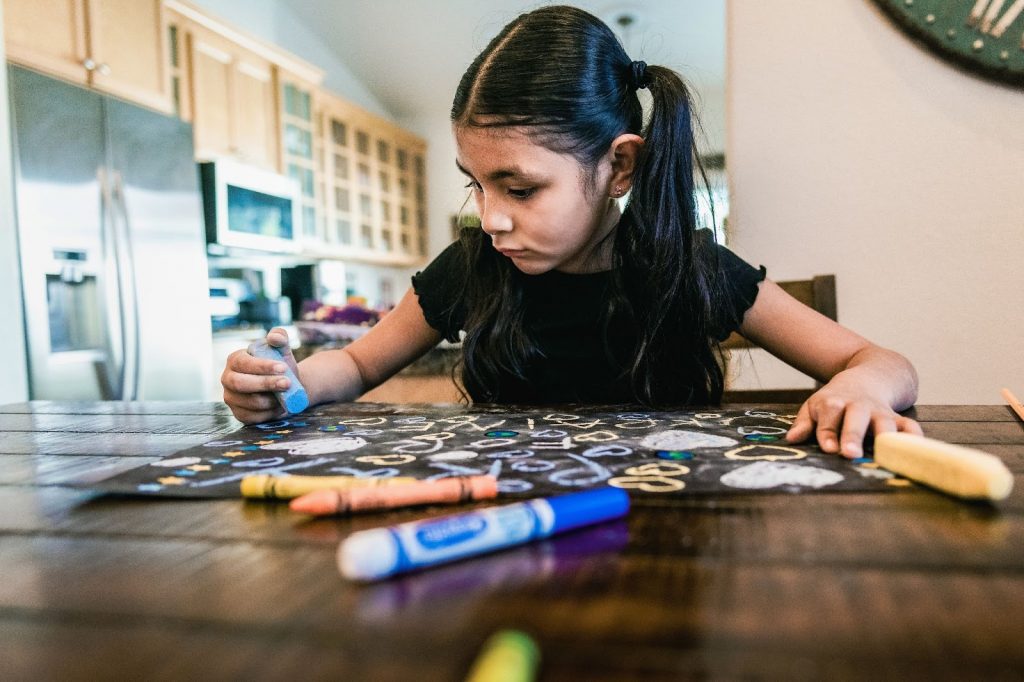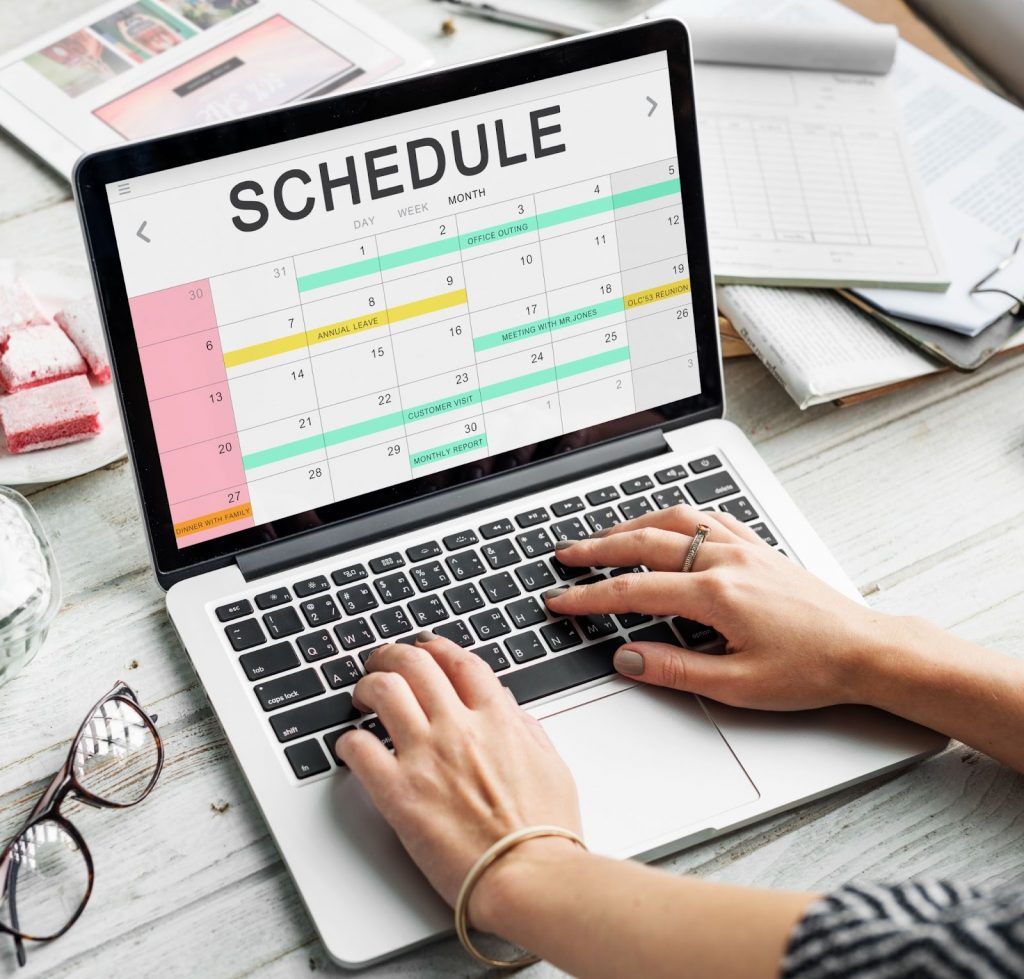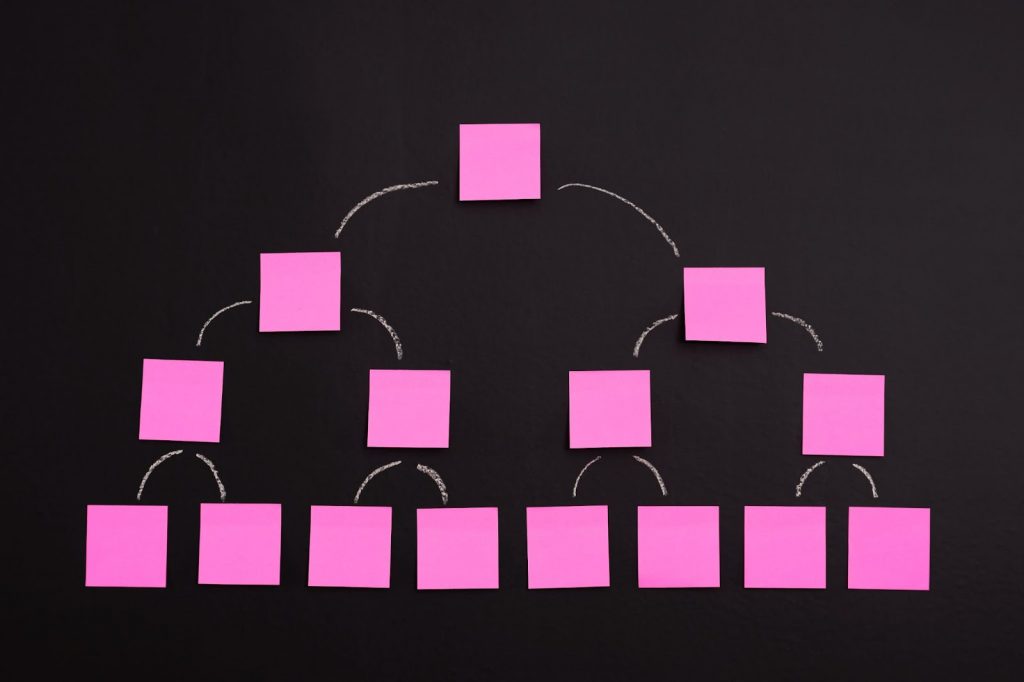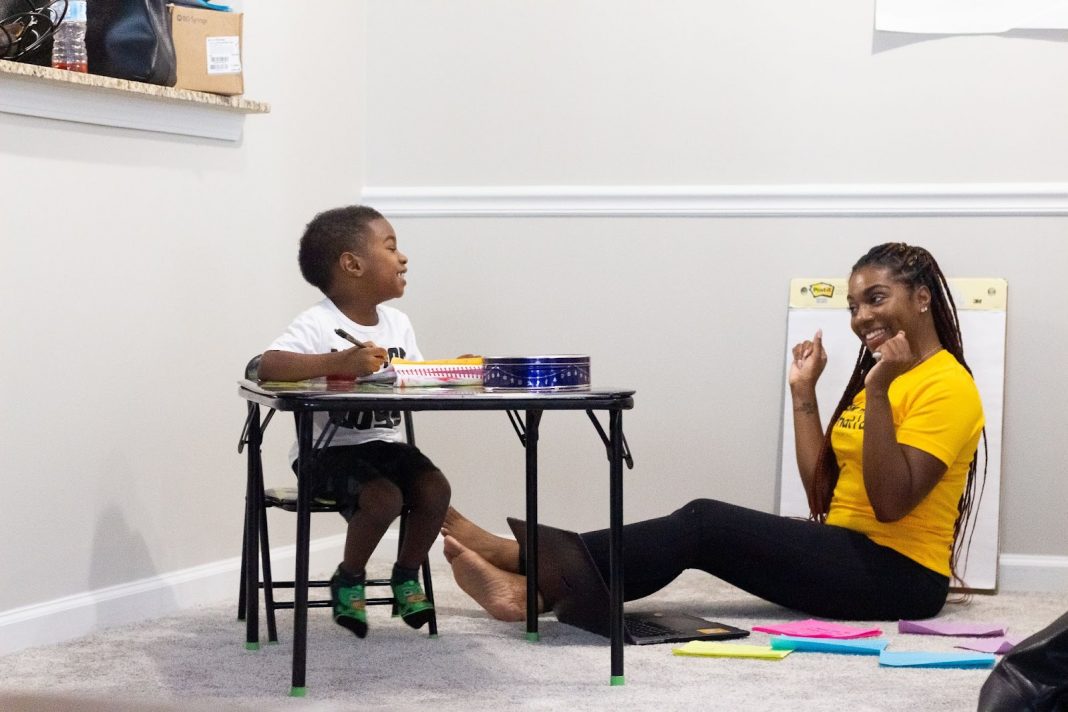As a homeschooler, you might find yourself wondering how to create effective and engaging homeschool lesson plans for your children or students. With the rise in homeschooling, it’s important to have a solid understanding of what homeschool lesson plans are and how to create them.
Math & ELA | PreK To Grade 5
Kids see fun.
You see real learning outcomes.
Watch your kids fall in love with math & reading through our scientifically designed curriculum.
Parents, try for free Teachers, use for free
In this article, we’ll cover everything you need to know about homeschool lesson plans, including the difference between a lesson plan and a schedule and tips for creating effective plans.
What is a Homeschool Lesson Plan?

A homeschool lesson plan is a detailed outline of the topics and subjects that your child will be learning over a specific period of time. A well-organized homeschool lesson plan serves as a roadmap for your child’s education and allows you to track their progress and adjust your approach as needed.
“A goal without a plan is just a wish.” – Antoine de Saint-Exupéry
A homeschool lesson plan typically includes the objectives or goals for each lesson, any materials or resources needed, and the specific time frame for completing each lesson. The lesson plan should be tailored to your child’s individual learning needs and should take into consideration their strengths, weaknesses, and interests.
One of the benefits of homeschooling is the ability to customize your child’s education to fit their unique needs and learning style. In fact, a study found that homeschooling can lead to higher academic achievement compared to traditional schooling.
By creating a homeschool plan, you can ensure that your child is receiving a well-rounded education that covers all the necessary subjects and topics while also allowing for flexibility and individualized learning.
Related Reading: Helpful Homeschooling Resources for Parents
Homeschool Lesson Plan vs. Homeschool Schedule

If you have any confusion between a homeschool lesson plan and a homeschool schedule, let us help you out. While both are crucial components of homeschooling, they serve different purposes.
A homeschool lesson plan is a document that outlines the learning objectives for a particular subject or topic, along with the materials needed to achieve those objectives. It is a detailed plan of what will be covered during a lesson or a series of lessons, including activities, assessments, and any other resources that will be used.
On the other hand, a homeschool schedule is a broader document that outlines the daily or weekly routine of your homeschool. It’s a plan for how you will structure your day and allocate time for each subject. It can include meal times, breaks, extracurricular activities, and any other events that may impact your homeschooling schedule.
It’s important to note that a homeschool lesson plan is a component of a homeschool schedule. The lesson plan underscores what will be taught during a particular time frame, while the homeschool schedule outlines how that time frame will look like. A homeschool schedule is more of a daily or weekly routine, while a homeschool lesson plan is a detailed breakdown of what will be taught during that routine.
5 Steps to Create a Homeschool Lesson Plan

Now that you know what a homeschool lesson plan is, you must be wondering how to lesson plan for homeschool. Here we will discuss a simple step-by-step guide to help you build the perfect lesson plan for your child.
Step 1: Develop a Homeschool Calendar

The first step in creating a homeschool lesson plan is to develop a calendar. This should be typically for 180 days, excluding weekends. This will help you determine how many school days you will have and what breaks you will take throughout the year. By having a clear idea of your schedule, you can plan your lessons and units accordingly. Also, remember to be flexible with the calendar as per your child’s learning needs.
Step 2: Select Textbooks and Curriculum Materials

After creating a calendar, the next step is to choose the textbooks and curriculum materials you will use for the year. You can select textbooks that cover the subjects you want your child to learn or choose a curriculum that provides a more comprehensive approach. Make sure the materials you choose to align with your child’s learning style and grade level, and also the right components of the curriculum. This includes deciding whether you will supplement your textbooks with supplementary materials, if your chosen curriculum includes lesson plans or STEM learning activities in the teaching materials, or if you need to search for external resources, if your textbooks offer teacher resources, and if you are participating in a homeschool cooperative or outsourcing some of the learning.
Related Reading: Best Homeschool Books for Kids – Engaging & Effective Learning
Step 3: Determine the Units and Chapters You Will Cover

Once you have your materials, it’s time to determine which units and chapters you will cover. This involves reviewing the textbooks and curriculum materials and deciding which topics you want to teach. Grade-level learning standards can help guide your choices, as can your child’s interests in the subjects.
If you are not following a specific textbook series then it is important to ensure that you are building on the previous year’s knowledge and preparing for the following year. For high schoolers, it is essential to review your state’s graduation requirements when planning. It may be tempting to cover every chapter of every textbook, but this is not necessary. Even experienced teachers in traditional schools often do not complete textbooks. If you are using additional resources, your use of the textbook may be limited. If you choose to create your own curriculum using non-textbook resources, you will need to refer to learning guidelines to help you decide which topics to include.
Related Reading: How to Choose a Homeschooling Curriculum: 5 Simple Ways
Step 4: Align the Units and Chapters to Your Homeschool Calendar

After deciding which units and chapters to cover, you need to align them with your homeschool calendar. Determine how many days you will need to cover each unit and chapter and schedule them accordingly. For instance, if you have chosen a textbook with 12 chapters, you can allocate around three weeks for each chapter. However, some chapters might take more or less than three weeks based on your child’s skill level and interests, so you should adjust your plans accordingly. This is where you create a general overview of the academic year for each subject by mapping the significant concepts onto your calendar. While transitioning between subjects, avoid scheduling significant projects or tests at the same time in multiple subjects, and ensure that you leave time for extracurricular activities that are related to the subjects you are planning. Make sure you factor in time for review and assessments.
In addition to mapping the big concepts onto your calendar, you should also decide how many days per week you will devote to each subject area. If your teacher edition includes lesson plans, you will have a good idea of how many days you should spend on each unit. In younger grades, the daily subjects usually include English language arts (ELA), such as reading, writing, and spelling, as well as mathematics. As students progress to middle and high school, they may cover every subject every day, including history or social studies and science, with only electives being less frequent. You may want to involve your high schooler in the planning process, or they may be able to do it themselves.
Step 5: Break Down Units into Lessons

The final step is to break down each unit into lessons. This involves dividing the unit into smaller, manageable sections and planning out how many days you will spend on each section. You can choose to plan the specifics all at once, monthly, or on another schedule that suits you. Consider your child’s learning style when planning lessons and try new strategies to help them grasp concepts. Planning week-by-week or month-by-month allows you to make adjustments based on what works best for your child.
You will find that textbooks may already include objectives for each chapter. At the very least, the lesson plan should list which pages of the textbook to use and any additional materials required. Look for instruction tips, particularly for core subjects like reading and math.
Related Reading: How to Homeschool: 15 Strategies for Parents & Kids
Tips to Create a Homeschool Lesson Plan
Homeschool lesson planning can be overwhelming, especially for those who are new to the concept. Let’s discuss steps for homeschool lesson planning for each grade so that you clearly know what to focus on.
Preschool Lesson Plans for Homeschooling
- Keep preschool lesson activities simple, interactive, and fun, stimulating their senses and encouraging exploration.
- Utilize a theme-based approach and picture books to promote reading and literacy development.
- Establish daily routines like circle time and outdoor play to provide structure and consistency.
- Focus on teaching essential skills: fine motor skills (holding crayons and using scissors) and gross motor skills (sitting, standing, running, etc.).
- Promote gross motor skill development through outdoor play and coordination activities like crossing the midline exercises.
- Introduce sorting as an early math skill, where objects are organized by size, shape, and color.
- Foster early literacy skills by teaching letter-sound associations, word formation, and comprehension through storytelling.
Related Reading: Best Preschool Homeschool Curriculum
Homeschool Kindergarten Lesson Plans
- Promote hands-on learning for kindergarteners with manipulatives like blocks and puzzles to develop math and reasoning abilities.
- Encourage exploration and observation through hands-on science experiments and nature walks.
- Utilize phonics-based instruction to foster reading and writing skills.
- Cultivate listening and direction-following abilities, aiming for up to 15 minutes of attention span.
- Develop reading skills, recognizing frequently occurring words and early reading.
- Focus on writing skills, teaching the printing of upper and lowercase letters and numbers 0-9.
- Incorporate math skills, including simple addition, subtraction, and measuring techniques.
Related Reading: What Do Kids Learn in Kindergarten: Overview, Subjects & Skills
Homeschool Elementary Lesson Plans
- Utilize a structured approach with various instructional methods (lectures, group activities, and hands-on projects) to encourage critical thinking and creativity in elementary students.
- Focus on reading and writing activities to develop literacy skills.
- Use math manipulatives and real-life examples to make math relatable and engaging.
- Promote inquiry and exploration with science experiments and social studies projects.
- Opt for active learning opportunities to enhance student interest and retention.
- Assess student learning through grades for assignments, tests, projects, and activities, or general observations of competency.
- Consider integrating technology into the lesson plans to improve student engagement and motivation based on research findings.
Homeschool Middle and High School Lesson Plans
- Adopt a rigorous approach to learning for middle and high school students, utilizing textbooks, online resources, and literature for independent study.
- Encourage critical thinking and analysis through discussions and debates.
- Develop research and writing skills with writing assignments and research projects.
- Enhance math engagement with real-life examples.
- Emphasize assessments like reading quizzes, tests, and projects for a significant portion of students’ overall grades.
- Teach time management skills to high school students, preparing them for college and beyond.
Related Reading: Interesting Debate Topics for Kids of All Ages & Grades
5 Steps to Create a Basic Homeschool Schedule

Creating a basic homeschool schedule is an important part of your homeschooling journey. It helps you plan your day, organize your homeschool lesson plans, and ensure that your children are learning effectively. Here are a few steps to create a basic homeschool schedule.
Step 1: Determine your daily routine
Take some time to evaluate your daily routine and figure out the best time for homeschooling. Do you have early risers or night owls? Are there specific times of day when your children are most focused and productive? Consider your family’s unique schedule and preferences when deciding when to schedule your homeschool lessons.
Step 2: Set learning goals
Before you start creating your schedule, it’s essential to set specific learning goals for your children. Think about the subjects you want to cover, the skills you want to develop, and the objectives you want your children to achieve. These goals will help you plan out the specific lessons you will teach and create a well-rounded homeschool curriculum with lesson plans.
Step 3: Choose your homeschool curriculum and materials
The next step is to select the right homeschool curriculum and materials that align with your learning goals. There are many different options available, from textbooks and workbooks to online resources and educational apps. Consider your children’s learning styles and interests when selecting your curriculum and materials.
Step 4: Divide your day into blocks of time
Once you have chosen your homeschool curriculum, you can start dividing your day into blocks for each subject or activity. Allocate enough time for each subject to ensure that your children can focus and learn effectively.
Step 5: Be flexible
Remember that your homeschool schedule doesn’t have to be set in stone. You may need to adjust your schedule time and again to accommodate unexpected events or changes in your routine. It’s also important to be flexible in terms of pacing and progress. Some subjects may take longer to master than others, and that’s okay.
Creating a basic homeschool schedule and homeschool lesson plan can be a helpful tool in effective teaching. By taking into consideration your family’s unique schedule, prioritizing subjects, and incorporating breaks and physical activity, you can create a schedule and plan that works best for you and your children. Remember to remain flexible and adjust the schedule as needed.
Conclusion
In conclusion, creating homeschool lesson plans is vital to nurturing your child’s educational journey. As Benjamin Franklin once wisely said, “Tell me and I forget, teach me and I may remember, involve me and I learn.” By actively involving your child in the lesson planning process, you can ignite their curiosity, foster a love for learning, and empower them to take ownership of their education. Remember, homeschooling provides a unique opportunity to tailor lessons to your child’s specific needs and interests, promoting a profound and meaningful understanding of the subjects at hand. So, embrace the role of a dedicated educator, and with well-crafted lesson plans, watch your child thrive academically and personally. Here’s to creating impactful homeschool lesson plans that inspire a lifelong passion for knowledge!
Frequently Asked Questions (FAQs)
How do I know if my homeschool lesson plan is working?
Regular assessment and observation of your child’s progress are key to ensuring that your homeschool lesson plan is effective. You can use quizzes, tests, and projects to gauge your child’s understanding of the material and adjust your plan as needed based on their performance.
What should I do if my child is struggling with a particular subject in their homeschool lesson plan?
It’s important to recognize when your child needs extra help with a subject. Consider reaching out to other homeschool parents or joining a co-op for additional resources and support. You can also look into hiring a tutor or finding online resources to supplement your lessons.
What is a good lesson plan format?
A proficient lesson plan should encompass and merge these three crucial elements: Goals for students’ learning, teaching/learning techniques, and approaches to evaluate students’ comprehension.
























